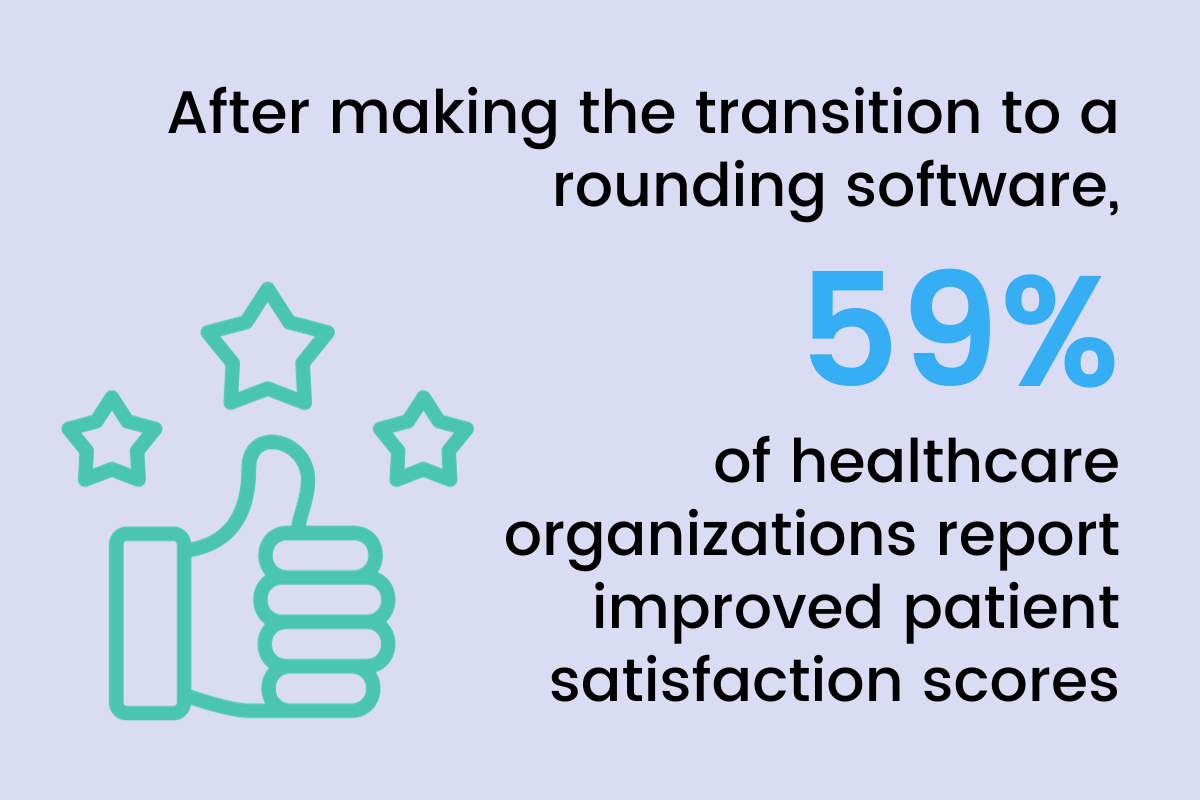3 min read
4 Ways Purposeful Rounding Improves Patient Experience & Outcomes
Performance Health Partners
February 10, 2022
Purposeful rounding is defined as a proactive, systemic, nurse-driven, evidence-based intervention that helps anticipate and address patient needs, helps create a quality patient-provider relationship [1]. That relationship is a tried-and-true component to improve the patient experience.
4 Ways Purposeful Rounding Positively Impacts the Patient Experience
1. Improves Quality of Care
The purposeful rounding model has been shown to improve the quality of care in hospitals, and reduce the number of falls and injuries among patients, as well as reduce the number of hospital-acquired infections.
-
- Infection Prevention Rounds: Infections account for 1.2 percent of every 1,000 patients readmitted to a hospital.[2] Use rounding to ensure proper hand hygiene, pressure sore management, as well as other infection protocols that reduce infection both during patient stay and after discharge. With better infection control programs and improvement processes, readmission rates decline.
2. Improves Communication and Builds Trust
One of the benefits rounding software has on patient experience is that it improves communication. Effective communication is an essential factor in nurse-patient interactions and a core component of nursing care.[3]
The nurses’ ability to answer questions and discuss any patient concerns is addressed efficiently and confidently making the patient feel respected, cared for, and their healthcare provider cares about their well-being.
The ability for patients and providers to communicate clearly can ensure that patients are as informed as they need to be about their progress, making them more satisfied with their care overall.
Relationships are fundamental to trust and purposeful rounding is crucial for building a trusting relationship with a patient. In today's digital age, communication seems rushed and there are limited chances for face-to-face interaction between nurses and patients— yet these interactions have been shown to be key in building relationships from both sides.[4]
Patients feel comfortable with regular compassionate interactions. They feel empathy when they know they’ll be checked on regularly and have an opportunity to ask questions.

3. Decreases Readmission Rates
The experience patients have during their time in the hospital can be just as significant a factor in determining if they will come back or not.
A study suggests that “elements of care related to staff responsiveness during patients’ stay may influence rehospitalization rates. Changes in staff responsiveness may offer an additional tool for hospitals to employ ongoing efforts to achieve reductions in readmissions, an important objective both financially and for patient health outcomes.
-
- Post-Discharge Rounds: Completing discharge rounds, as well as follow-up discharge rounds, ensures patients have a complete understanding of their medication timing, dosage and frequency. It also offers an opportunity to ask questions and have complete clarity — a complete understanding of discharge plans — and receive complete information on post-discharge care. [5]
4. Decreases Patient Anxiety
Purposeful rounding with care and compassion is an integral part of providing patient-centered healthcare that helps reduce anxiety levels and reduce stress. Purposeful rounding is a personalized experience tailored to the individual's needs and positively impacts the overall patient experience.
With regular check-ins from nurses, patients know that they have consistent support and don’t feel like they’re being rushed or ignored which often helps make an often-frightening environment more comfortable.
The Benefits of Purposeful Rounding with Technology
Healthcare organizations opt for rounding technology to significantly increase patient safety.
Using patient rounding technology has improved patient satisfaction scores in 59 percent of organizations. Thirty-seven percent of organizations benefitted from the technology’s immediate feedback and recovery functions, and the same amount benefitted from the accountability and compliance benefits.[6]
1. More Effective & Efficient
Technology enables information in real-time. For example, if an area of concern is discovered during rounding, instant notifications and action plans can be initiated.
2. Easy to Collect & Analyze Data
Purposeful rounding technology allows better data coordination, collaboration, and management to improve outcomes and streamline workflow across departments and shift changes.
Data provides insights into healthcare operations and gives meaning to improvement initiatives. By collecting timely data through purposeful rounds, health systems can better understand what happens daily and identify insights and trends.
3. Improves Outcomes
The benefits of collecting data and holding staff accountable help to improve transparency within the hospital and enhance the journey toward a high reliability, safer organization.[7] The purpose of rounding on patients every hour is to proactively address patients’ needs.[8] By doing so, we increase the quality of the patient’s experience and also improve the efficiency of the patient’s nurse.
Purposeful Rounding Technology from Performance Health Partners
Learning how to improve the patient experience with purposeful rounding starts with Performance Health Partners. Our streamlined Quality & Performance Improvement solutions allow healthcare organizations to achieve the highest quality care in the safest possible environment. See how our technology helps patient rounding.
1. https://www.myamericannurse.com/value-purposeful-rounding/
2. http://www.sbnonline.com/article/rounding-helping-hospitals-reduce-patient-readmissions/
3. https://bmcnurs.biomedcentral.com/articles/10.1186/s12912-021-00684-2#Sec14
4. https://www.tandfonline.com/doi/full/10.1080/13698570310001606941
5. http://www.sbnonline.com/article/rounding-helping-hospitals-reduce-patient-readmissions/


